Blog about tasting the first historical recipes
by Cordula Scherer – Food Smart Dublin
Published: 27 March 2020Return to Blog list
This blog describes my first tasting of three historical recipes cooked up by Niall Sabongi and his truly gifted chef Muireann Mc Colgan. It was the highlight of my week!
I was ready to roll up my sleeves and get cooking with Niall in his Seafood Café on Wednesday 5 Feb 2020. When I arrived I was greeted with a big smile and four friendly faces in the restaurant, during a brief quiet period. Niall introduces me to his master chef Muireann who played a key role in picking and recreating the first three historical recipes described here. The recipes (old and new) will go up on our Food Smart Dublin website so watch out for them!
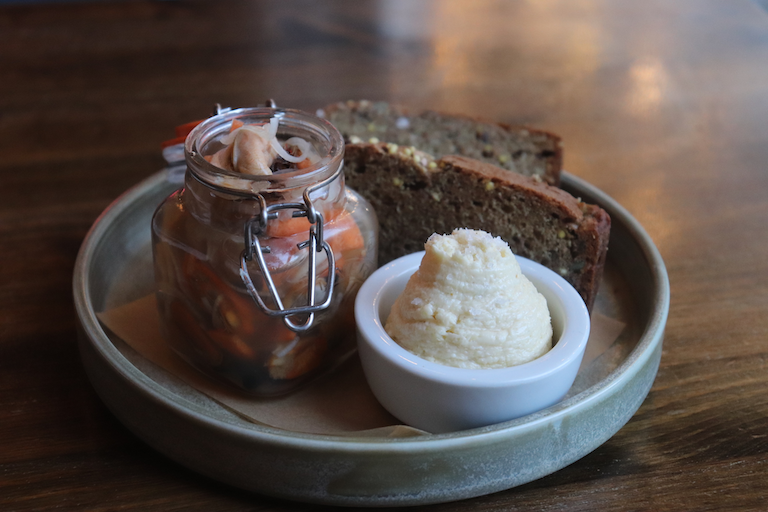
Before we started I offered my last two poppy seed lemon muffins to the guys that I baked this morning and Philly and Muireann took them happily – Niall was fasting and smelled them jealously (8 more minutes until he could eat again). When we settled on our bar stools Niall pulled up the first tasting plate decorated with a jar of pickles, seedy brown bread and some sort of white crème. Muireann and Niall explained that this is an untailored, unchanged recipe for pickled cockles (Cerastoderma edule) and mussels (Mytilus edulis) with shallots, carrots and whole black peppercorns with a horseradish butter and bread on the side. I sourced the original from a recipe in Hannah Glasse's book "The Art of Cookery Made Plain and Easy" first published in 1747 with this edition from 1777 printed in Dublin.
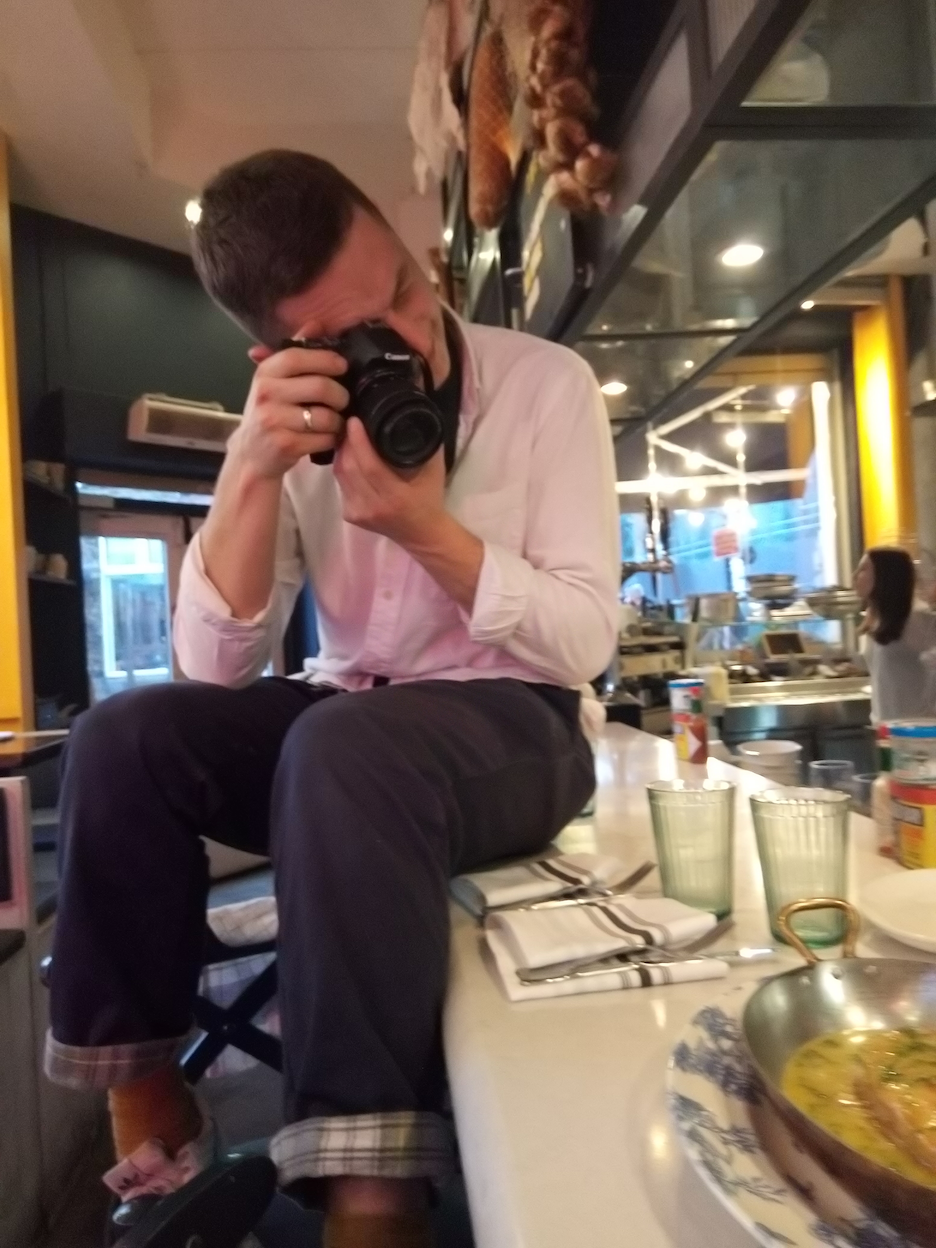
Philly and I took some photos and then with forks and spoons in our hands, and a slice of bread between our fingers, we dug in – Niall was the first one scoffing the delicious taster and when I tried my first bite a little anxiously, (because I’m still only exploring seafood eating myself) I’m surprised by the very tender non-chewy texture that awaited me. The bread and horseradish spread topped with pickled filter feeders (i.e. cockles and mussels) was just the perfect combination – finger-licking good! I only contained myself, because I knew there was more to come. And they had it all cooked and ready to be tasted by me - I didn’t need to do a thing – just needed to call over for the tasting of these amazing old Dublin recipes! If that’s not a heavenly day in a researcher’s life, I don’t know what is…
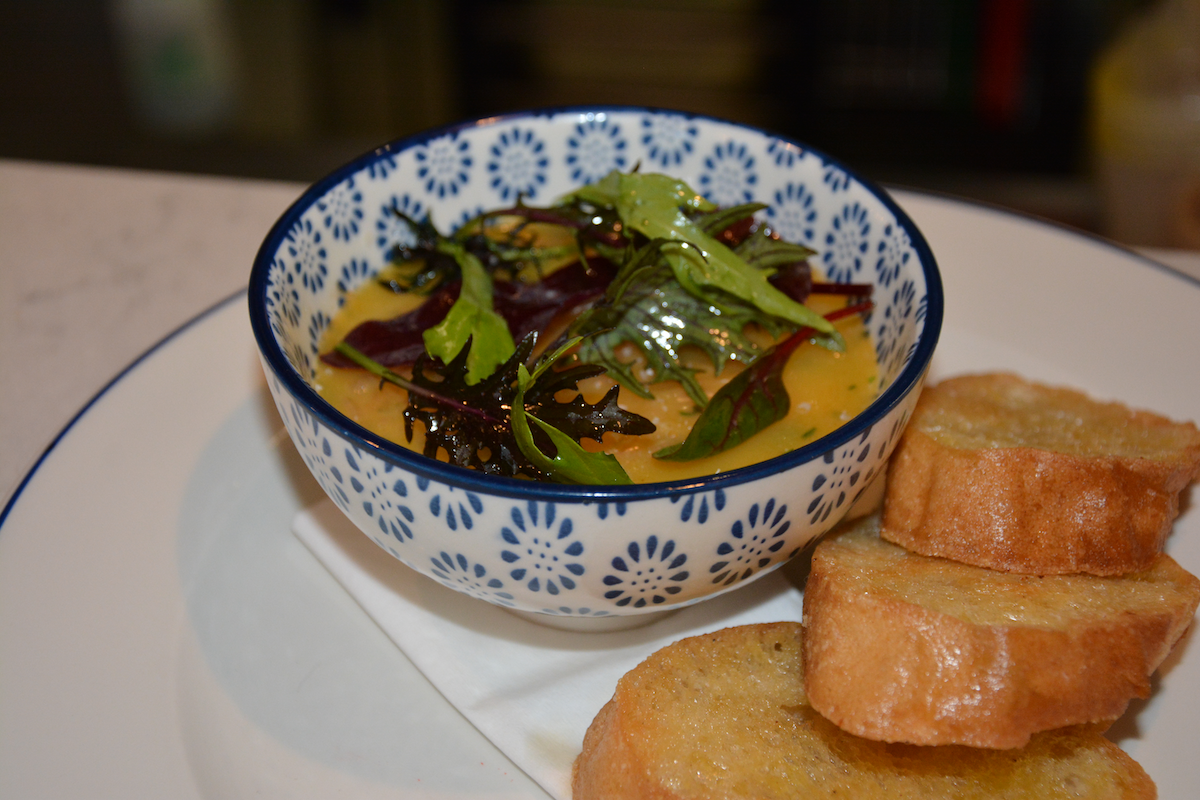
Next up: Potted crab. And here again, Muireann told me that she kept to the recipe they found in my collection this time by Rundell 1807 "A new system of domestic cookery formed upon princliples of economy and adapted to the use of private families". The only thing they did was replace the lobster in the recipe with common crab (Cancer pagurus) on cost and seasonality grounds (lobster is out of season right now). The potted crab was served (and eaten!) with toasted slices of French bread. Looking forward to my crab meat which I have learned to really like since I started dining in Niall’s restaurant I wasn't let down by this dish! It’s amazing how it is packed with so much flavour without taking away from the sweet taste of the crab meat - this is the perfect party dish as a starter to impress your guests with or just shared as a snack with good friends. Muireann said she added a bit of mayo and didn’t use quite as much brown crab meat as she could’ve possibly done, because she didn’t want to over-flavour it with the brown meat’s strong taste. She did a brilliant job with this one.
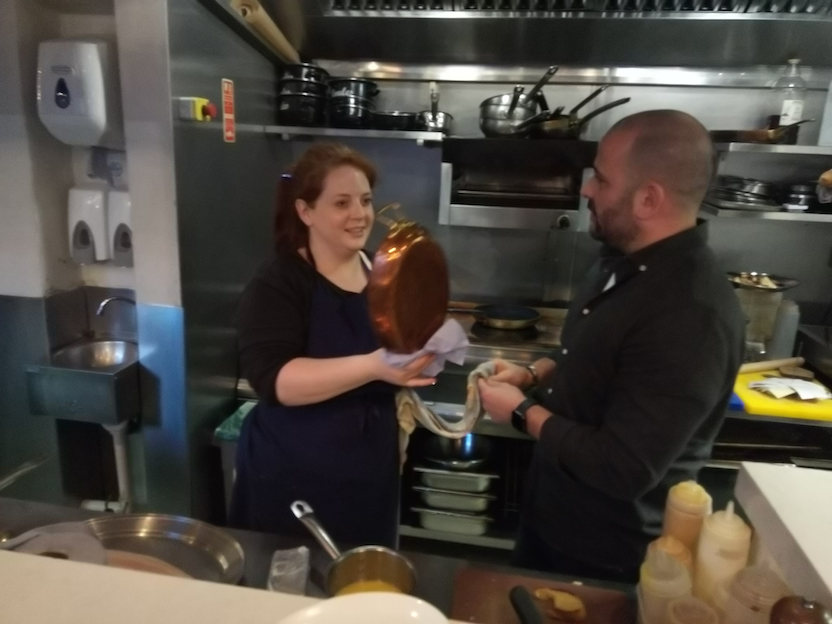
This woman really knows her trade having enjoyed a chef’s best education in the TUD cookery school in Dublin under great names such as food historian Máirtín Mac Con Iomaire. What amazed me was the elegance and relaxed manner she moved around the kitchen, there was neither shouting nor hectic rushing that I would have somehow expected in a restaurant’s kitchen - instead there was peace, calm and jokes even when the place started to get busy and dinner orders from hungry guests were coming in. Everything was done in an effective and confident way, every move was perfect. Niall chatted about the methods he found in the historical recipes that I have sourced for them mainly from the National Library Ireland while casually giving Muireann an expert hand. It was great to see that even he gets excited in playful disbelief about how much butter they used in those days. I looked down at the potted crab and wondered how they coped with that much fat in the olden days when they had clarified butter (melted and skimmed butter) as their only means to preserve food stuffs by sealing them off to prevent oxygen from entering the meat.
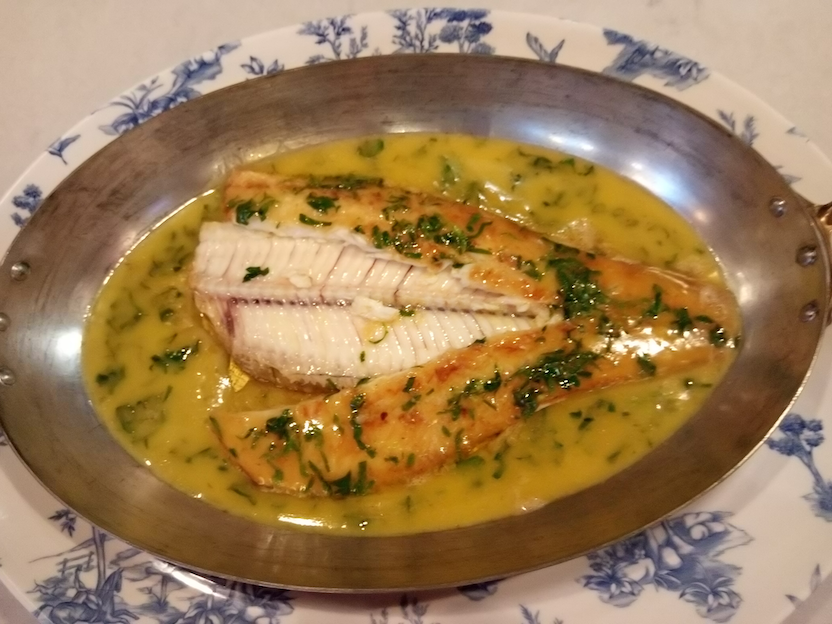
While we chatted away Muireann started cooking the sole for the last recipe. Here she explained she used megrim sole (Lepidorhombus whiffiagonis) which is a sustainable alternative to the nowadays overexploited black sole (Solea solea) that they would’ve used commonly in the olden days when plenty of them still swam in our seas. She recreated this recipe from 'Mary Cannon’s Commonplace Book – an Irish kitchen in the 1700s' by Marjorie Quarton.
I loved the way they cooked themselves up the food web starting at the bottom with cockles and mussels found at trophic (energy) level 2 filter feeding on phytoplankton and other small organic particles. Next up was the potted crab that feeds on plant and animal matter at an average of trophic level 2.5, followed by the sole whose main prey are small fish and crustaceans therefore being situated at trophic level 3.
Muireann had the sole lightly floured following the 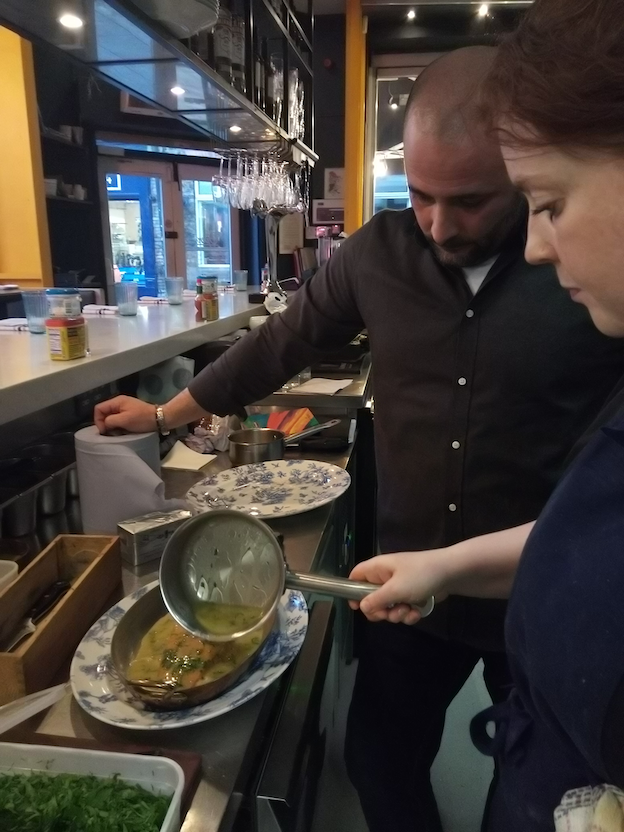 historical recipe precisely laying it into a heated pan full of butter. Then she basted the hot butter over it before she dished it out on a beautifully arranged blue and white plate in a heavy fish dish that Niall had taken down from the shelf and arranged for her – finely tuned teamwork between the two at its best.
historical recipe precisely laying it into a heated pan full of butter. Then she basted the hot butter over it before she dished it out on a beautifully arranged blue and white plate in a heavy fish dish that Niall had taken down from the shelf and arranged for her – finely tuned teamwork between the two at its best.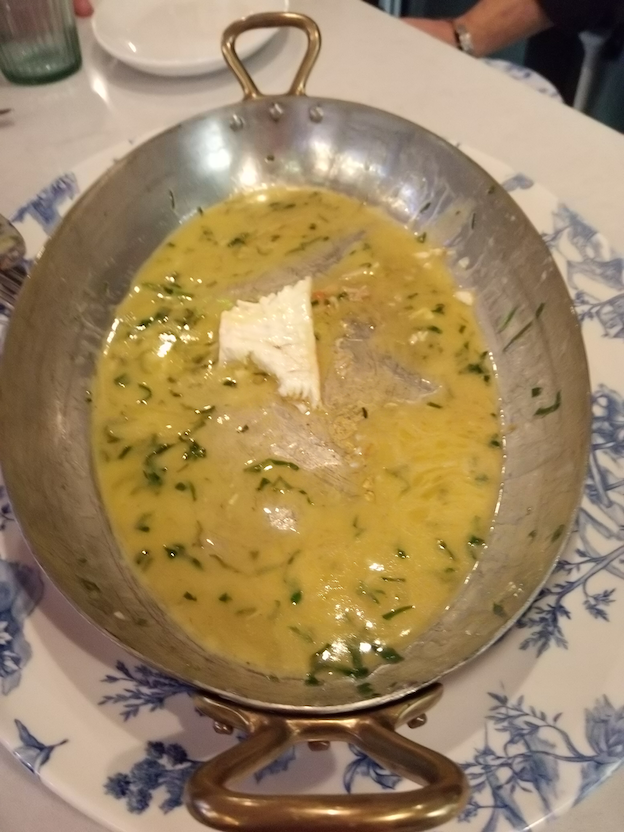
Philly already waited with his fork at the ready and the fish was polished off in no time as soon as Muireann had poured the butter lemon juice sauce with fresh parsley over it. What a treat!! Niall told me that he’ll have this beautiful dish on the Spring menu for the Seafood café – I can’t wait!
Having savoured all of these delicious dishes, we chatted about the next potential recipes, turbot as a family sharing dish, potted herring and salted mackerel on potatoes or should it be the towed ray that’s next? Next time, Niall promised, I can roll up my sleeves and help cooking too! I love my work with these guys!!

